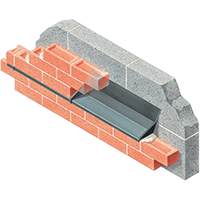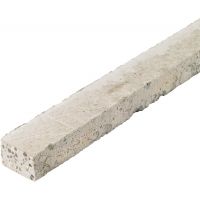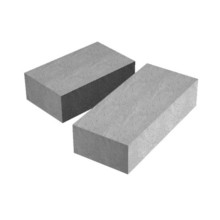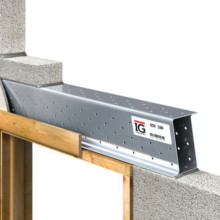Lintels
In this Category
More information about Lintels
What are lintels and what are they used for?
Lintels are an essential part of the construction of any commercial, residential or industrial building. Lintel support beams are placed above any opening within a building, such as internal doors and partitions, external doors and windows and any other openings. They help to ensure the structural stability of a building by strengthening the walls above the opening, distributing the weight across the surrounding walls and ensuring the opening doesn’t collapse.
Door lintels and windows lintels are placed between two vertical support beams and are a crucial component in protecting any areas of potential weakness in the building. Lintel beams can be used in masonry cavity walls, solid inside/outside walls, timber frame building, closed eaves and any jobs where high load-bearing support is needed.
What types of lintels do we have available?
Building lintels can be made from various materials and we stock both steel lintels and concrete lintels, each with their own advantages and benefits.
Concrete lintels
Our range of prestressed concrete lintels are high-quality, high-performance lintels that are not only durable and hard-wearing, but cost-effective too. Prestressed lintels have been placed under a high compression load before they’re used, resulting in top performance. Concrete is an excellent choice for brickwork lintels as well as with blockwork and stone cladding. They can also be used as fireplace lintels, as concrete is fire-resistant and has excellent thermal insulation properties.
Steel lintels
If you’d rather work with metal, steel lintels are an excellent choice, with a high strength-to-weight ratio. They can support heavier loads with less material and are especially hard-wearing and durable, while being lightweight and easier to handle - a great choice for an internal door lintel. Steel lintels such as single leaf lintels offer load-bearing support and thermal performance, improve wall integrity and provide stability.
Padstones, cavity trays & liners
As well as concrete and steel lintels, we also stock cavity trays and closers. Our cavity closers are insulated sections that seal off a cavity at the edges of its opening, providing damp proofing and thermal insulation. Cavity trays, including lintel, Type X and Type E Cavity Trays, are waterproof membranes that are installed above door and window openings to prevent water getting into the cavity wall. The combination of cavity trays and closers is an essential part of preventing condensation, dampness or the growth of mould in a building.
We also stock concrete padstones, which are a vital part of installing lintels – these concrete blocks are placed at the ends of lintel beams to provide solid support, help distribute the load and prevent the lintel from cracking or sagging.
Get your lintels at exclusive trade prices
You can have your lintels, along with your other building materials, delivered straight to site with our free Click & Deliver service, or pick up at a time that suits you with Click & Collect at your local Selco.
FAQs
Lintels are load-bearing support beams that are placed above any opening in a building, such as windows, doors and partitions. They’re used to strengthen the wall above an opening and ensure it doesn’t collapse, helping the overall structural stability of the building.
The basic steps to installing a lintel are to:
- Understand the correct minimum end bearing of the lintel
- Lay the lintel on a bed of mortar
- Check the lintel is level
- Allow the mortar to cure
- Lay bricks above the lintel
- Install a damp proof course (DPC)
You’ll need a masonry drill bit for concrete lintels and a high-speed steel (HSS) drill bit for steel lintels. Start with a smaller drill bit at a lower speed, gradually increasing the size and speed of the drill bit as you drill the hole.
Any opening in a building, including door openings, will need structural support above it. Some larger doors, such as patio doors, French doors and bi-fold doors, will need longer lintels above them if there isn’t already one in place.
Yes – you'll need a lintel above any window. Any opening in a building, including window openings, will need structural support. You need to install a lintel above your new window if there isn’t one already in place.



